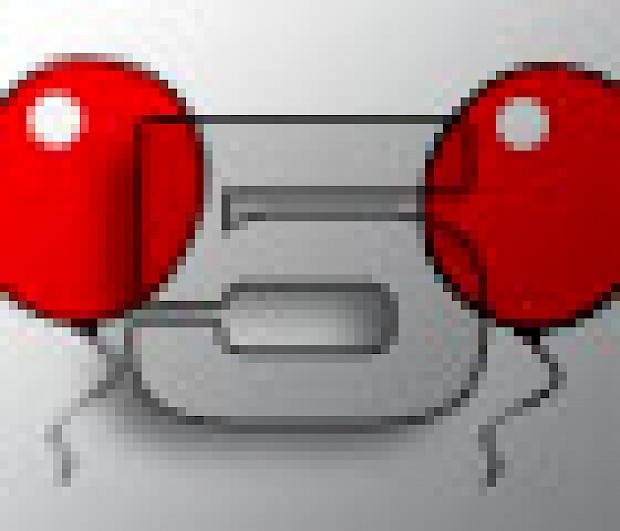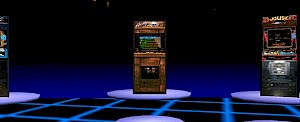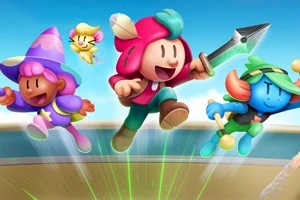5th Birthday: A Gamecube Retrospective

Posted 09 Jan 2006 at 20:08 by guest

| "Who could have predicted in the early 1990s that Sega would collaborate with Nintendo? The gaming industry's Berlin Wall had just fallen, and had confused hawk fanboys worldwide." |
Can it be that time again? It's New Year 2006 and the gaming community is all ready to pack up their old consoles and look forward to new systems and new games. Almost 4 years on since the release of the GameCube, what were the highs and lows of this generation for Nintendo fans?
May 2002 witnessed the European launch of Nintendo's fourth home console system. At an RRP of �129.99, the GameCube was the cheapest console at launch of this generation. This was due in part to a deliberately aggressive pricing policy by Nintendo, and recent events that may have influenced its decision � after Microsoft's Xbox found itself gathering dust on shop shelves before a dramatic �100 price slash, Nintendo may have spotted an opening for an inexpensive new system.
As for the machine itself, Nintendo discarded its cartridges for an optical disc format, capable of storing around 1.5 gigabytes. Although many gamers perhaps missed DVD functionality, the new system (joined with a robust processor and ATi graphics processor) had enough under the hood to match pace with powerful competitors. The GameCube's compact design remains one of its strongest features, though strangely enough is not technically a cube � unless the GameBoy Player add-on is used! The GameCube's indigo design and now infamous handle brought with it derision from many in the gaming community, particularly those devoid of a sense of humour. Yet Nintendo's hardware design was as strong as we've come to expect, and the GameCube's joypad � complete with unique analogue shoulder buttons and comfortable shape � is a creditable successor to the N64's three-pronged device.
Despite its weaknesses, the Nintendo 64 had provided a range of seminal first-party titles � notably Super Mario 64, and the two Zeldas. The greatest fear for fans was that the GameCube would be unable to match this track record. Metroid Prime proved such worries groundless.
In an industry packed with middle-of-the-road shooters, Nintendo and untested US developers Retro Studios gambled, and attempted to update the side-scrolling 8/16-bit classics into a first-person adventure. Fans who remembered the Metroid games need not have been concerned about Retro's stewardship of Metroid Prime � the game is one of the GameCube's strongest; a worthy successor to Super Metroid and the previous titles; a brilliant shooter in its own right, and a massive kick up the backside to a tired genre; and a next-gen update in the same league as Super Mario 64 and Ocarina of Time. (I think that's everything!)
Nintendo also delivered the goods with Intelligent System's charming and witty RPG, Paper Mario: The Thousand-Year Door, and its insect scavenger-hunt Pikmin games. The former delivered a hefty amount of adventuring in a vibrant world, while the latter combined tiny aliens, bugs, resource management and political insight to the capitalist world, which must surely make it the most unique title of recent years!
Yet it was the release of the much anticipated Super Mario Sunshine and The Legend of Zelda: The Wind Waker that brought the most unexpected disappointments. Many gamers remain unimpressed with the water pack and frustrating blue coin hunt in the plumber's latest adventure; even more controversial was the bold visual design of the game nicknamed "Cel-da". The fanboy backlash was fierce and unfair � the artistic style of The Wind Waker remains one of the highlights of this generation. More problematic was the fact that the game was clearly unfinished (missing at least one dungeon) and was the least challenging Zelda game in years. "Water, water everywhere" but not a landmass in sight � the forthcoming Twilight Princess looks like it will address these issues!
For all of these surprising first-party lapses, Nintendo demonstrated a renewed will to co-operate with third-party developers. Who could have predicted in the early 1990s that Sega would collaborate with Nintendo? The gaming industry's Berlin Wall had just fallen, and had confused hawk fanboys worldwide. Sega's update of Nintendo's futuristic racer, F-Zero GX, was warmly received by gamers, as was the inspired Super Monkey Ball which, with its addictive, straightforward gameplay and array of superb multiplayer mini-games, has become a firm favourite for gamers of all ages. Capcom delivered the goods with the distinctive Killer 7, a complete overhaul of its famous franchise in the form of Resident Evil 4, and a completely daft throwback to side-scrolling old-school gameplay with Viewtiful Joe.
As with the N64, four-player gaming was vital to the GameCube. The cult hit Super Smash Bros. from the previous generation became the multiplayer favourite of this generation, while Mario Power Tennis and Mario Smash Football provided more sports-themed fun. Only Mario Kart: Double Dash!! proved to be a relative disappointment, with a two-driver gameplay gimmick that did not always convince.
Also failing to convince gamers was Nintendo's inexplicable commitment to GameBoy connectivity. Even the most die-hard fan was only moderately interested in the ability to unlock bonuses between related GameCube and GameBoy titles. Nintendo largely squandered an opportunity to make The Legend of Zelda: Four Swords Adventures the multiplayer hit of this generation by forcing all four players to be set up with GameBoys, rendering the title inaccessible for most. As for the Japanese giant's well-known reluctance to join the online community, the only concession was their adapter and Phantasy Star Online, a situation clearly about to change with the Revolution.
And then there's Rare. The bombshell was dropped in September 2002, with the company's owners, and then Nintendo, agreeing to sell the British developer to rival Microsoft in a deal worth over $370 million. Initially a blow to the gamers who fondly remembered Rare's 16-bit titles, in addition to first-person classic GoldenEye, Blast Corps, Perfect Dark, Banjo-Kazooie and more, the Rare sale played out differently. Rare's only GameCube game, StarFox Adventures, was a Zelda clone, while staff walkouts preceded the sale; Rare's Xbox output has consisted of mostly mediocre titles accompanied by mediocre sales � most (least?) notably, the average Grabbed by the Ghoulies. The recent Xbox 360 launch featured the long-awaited Perfect Dark Zero, yet reviews have been largely unenthusiastic.
So here we are in 2006, and with one big Zelda title left before the Revolution begins. In terms of sales, it is estimated that Nintendo turns a profit on each unit sold, and with around 19 million units sold globally (yet trailing behind Microsoft and Sony), the Japanese company is turning its sights on the next generation. Out with the old...
Nick Bennett
n_p_bennett@yahoo.co.uk






















